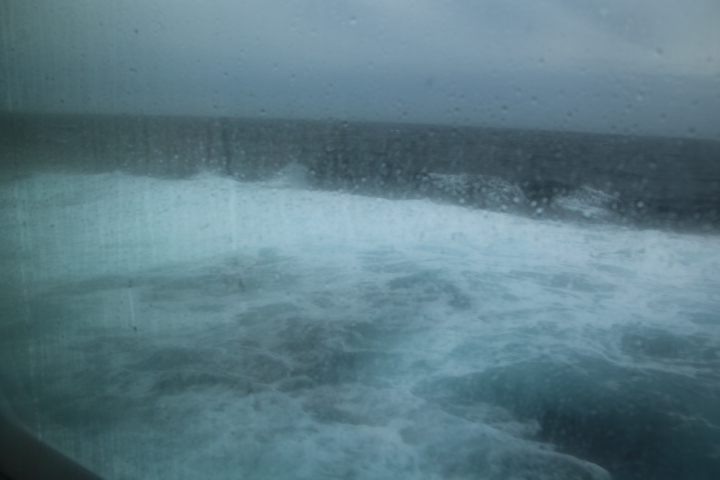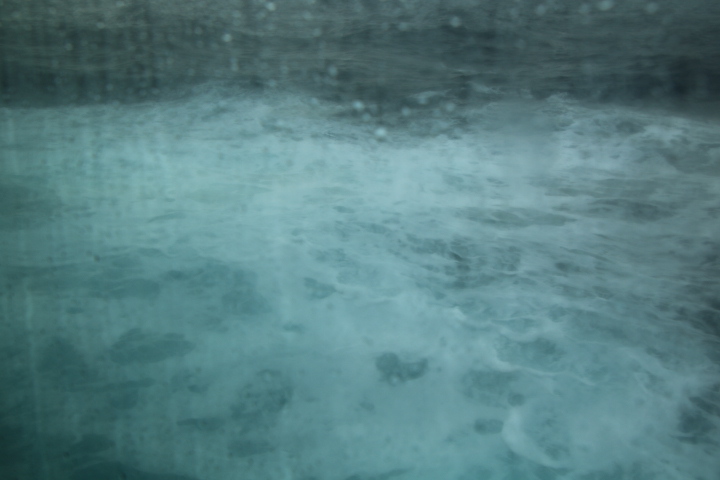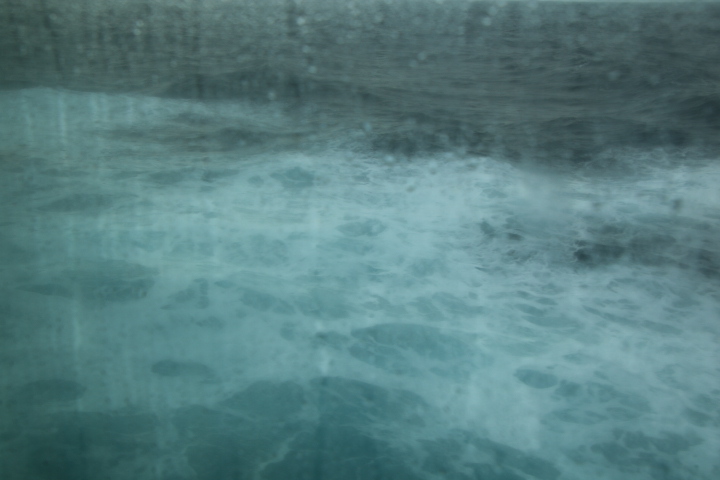Overnight we crossed Baffin Bay.


It was in these waters in 1845 that there was the last sighting of Franklin on his mission to find the NWP, from Greenhithe, London. Two small English vessels, called The Prince of Wales and The Enterprise, came across the two large vessels Erebus and Terror and stopped to check all was well. After this encounter, no one outside this part of the world heard from Franklin again. ‘This part of the World’ is important because there is Inuit testimony of contact with white sailors, but the Admiralty did not trust the evidence. Since these contacts, the Franklin story has become a mixture of fact, fiction and speculation with assorted fragments of hard evidence and artefacts. The simple truth is that no one knows, but the finding of the two ships may help to resolve some of the knowns and unknowns.
By breakfast we had entered the Davis Strait. This is notorious for its rough seas as the northerly winds often tear down here from the Pole. The Strait is named after John Davis, who navigated this area in 1587 and discovered what he described as a huge inlet of open water, “but beyond the means of exploring”.

No other English navigator reached as far north as Davis until William Baffin in 1616. He didn’t ‘make a lot of’ his most significant voyage and the possible finding of an entrance to the NWP. He did, however, point out the commercial possibilities of whaling and the next ships to enter the Strait and Baffin Bay were whalers. 200 years passed before another voyage of discovery by Captain John Ross, in 1818, circumnavigated Baffin Bay. The years of exploration introduced Europeans to these lands and waters west of Greenland. In 1614 the London-based Muscovy Company fitted out 14 whaling vessels, initially for use around Spitzbergen, but because the Dutch whaling fleet were protected by warships, the London whalers moved to the Davis Strait.

Unfortunately for Spitzbergen, the factory-like methods that the Dutch used, exhausted the surrounding waters. Whaling crews became experts in ice navigation which led to them being important members of expedition crews.
At lunchtime we turned more to the southeast and with 350 nautical miles to go we were heading towards Greenland. After our evening meal we are still heading towards Greenland.